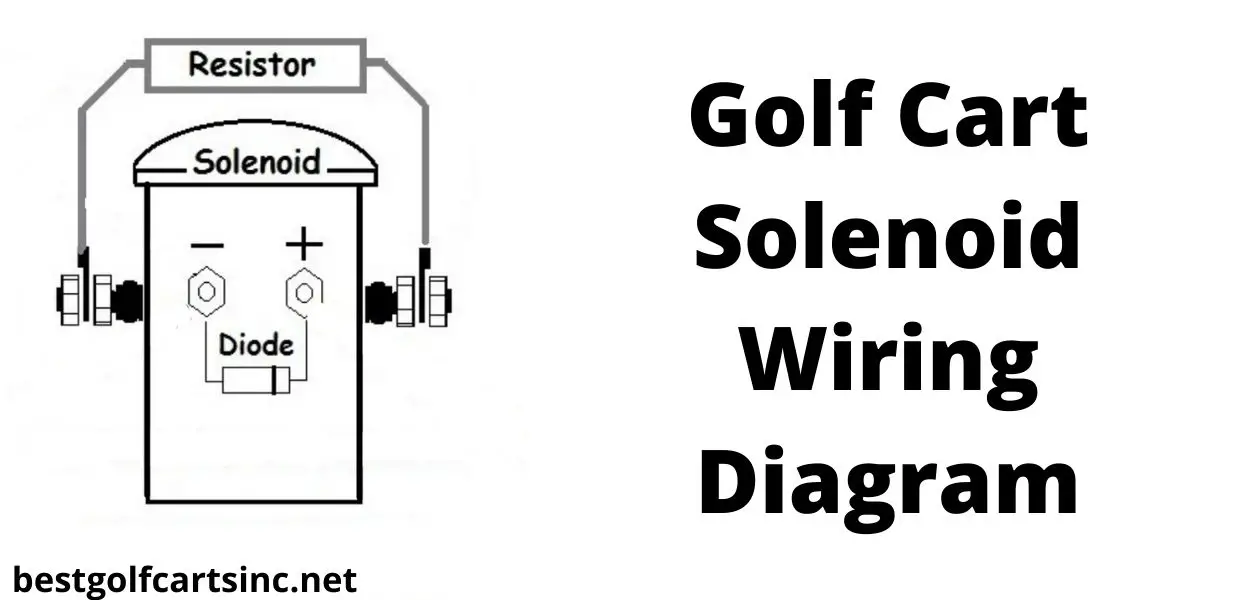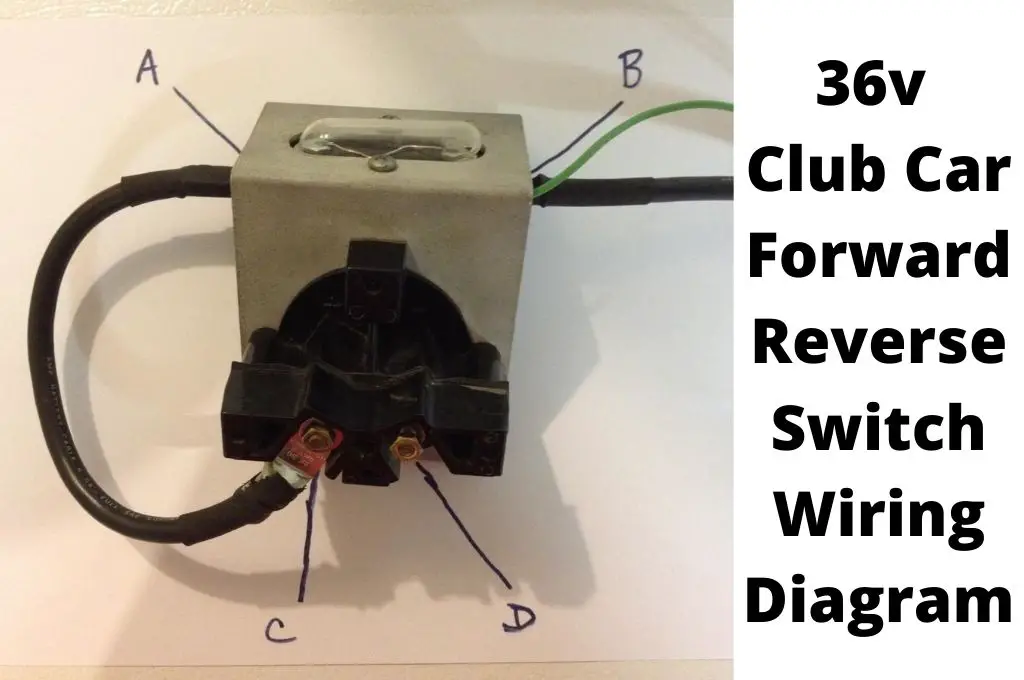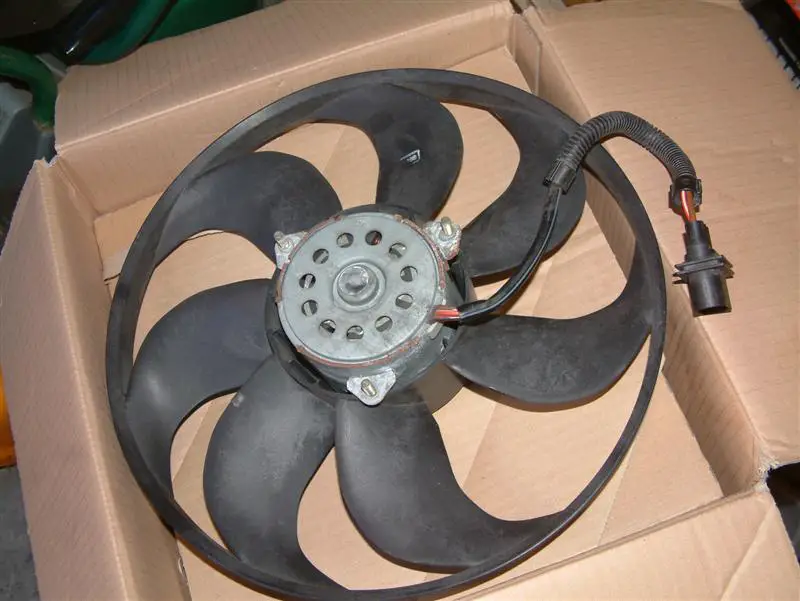In the event that you are driving a golf cart and feel like there is an error with the solenoid, then you must check the Golf Cart Solenoid Wiring Diagram to know where the fault lies.
In this article, I will show you a detailed Golf Cart Solenoid Wiring Diagram. I will also explain what the diagram means and answer related questions.
Golf Cart Solenoid Wiring Diagram
The following image shows the Golf Cart Solenoid Wiring Diagram and related connectors and circuit components:
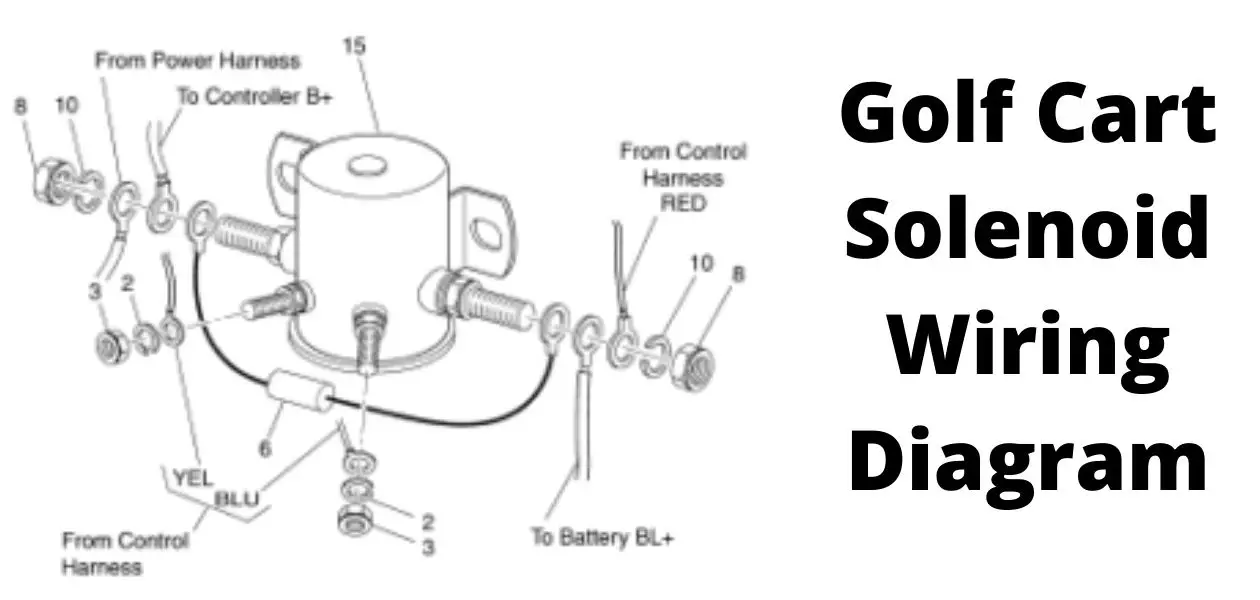
Related: 36 Volt EZ Go Golf Cart Battery Wiring Diagram.
Club Car Solenoid Wiring Diagram
The following Club Car Solenoid Wiring Diagram will help you troubleshoot your Club car golf cart’s solenoid:
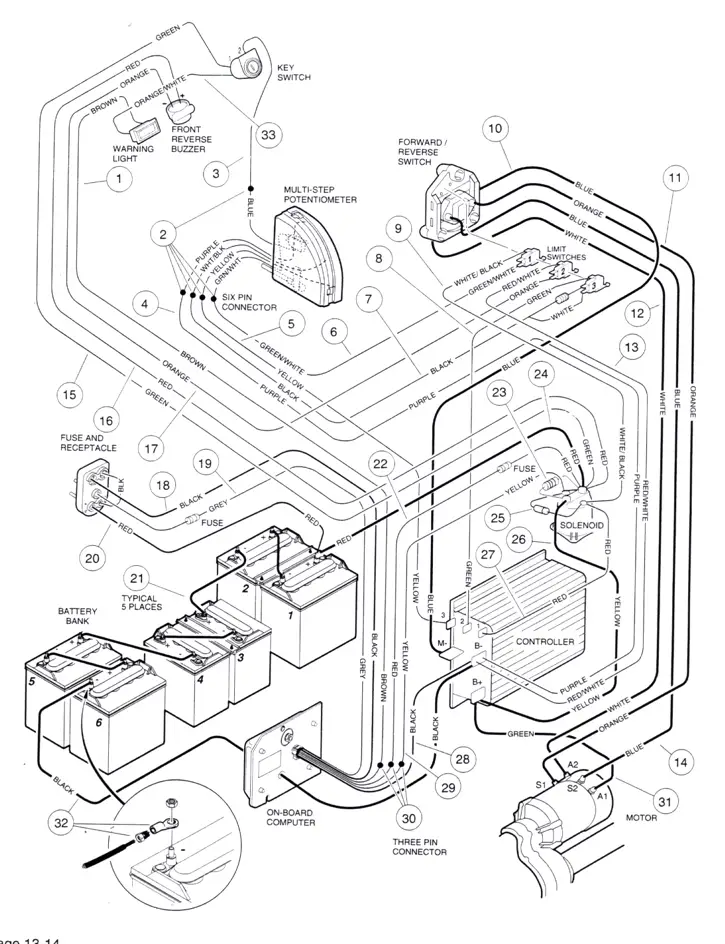
Club Car DS Solenoid Wiring Diagram
This is the Club Car DS Solenoid Wiring Diagram for the years 1981 to 2002:
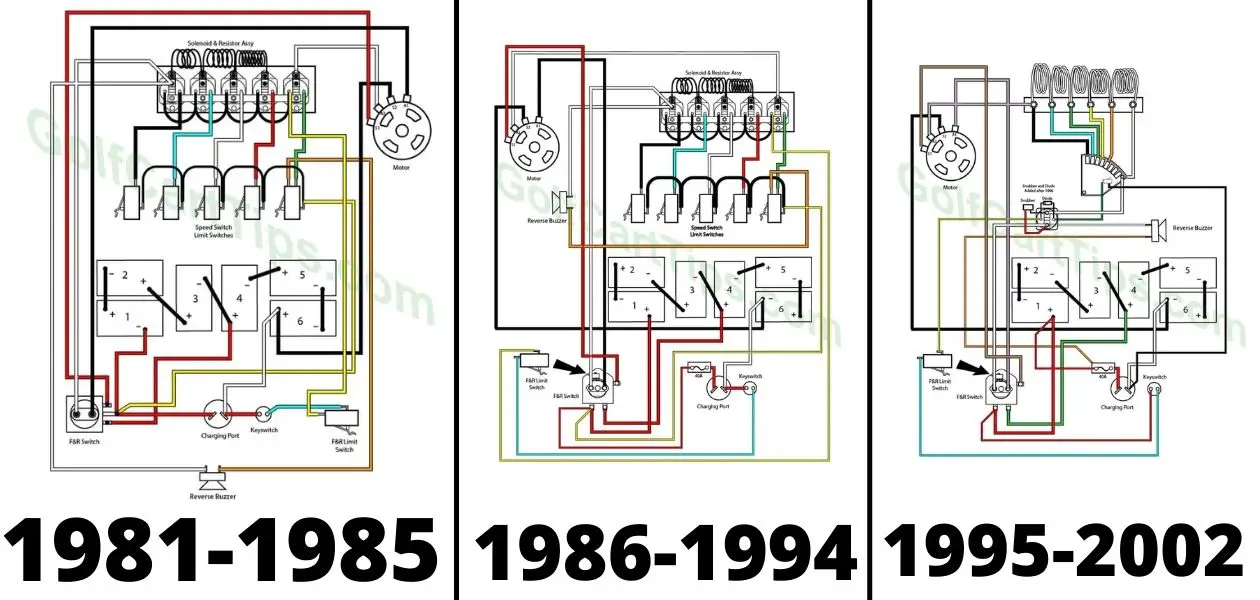
Club Car Precedent Solenoid Wiring Diagram
This is the Solenoid wiring diagram for Club Car Precedent:
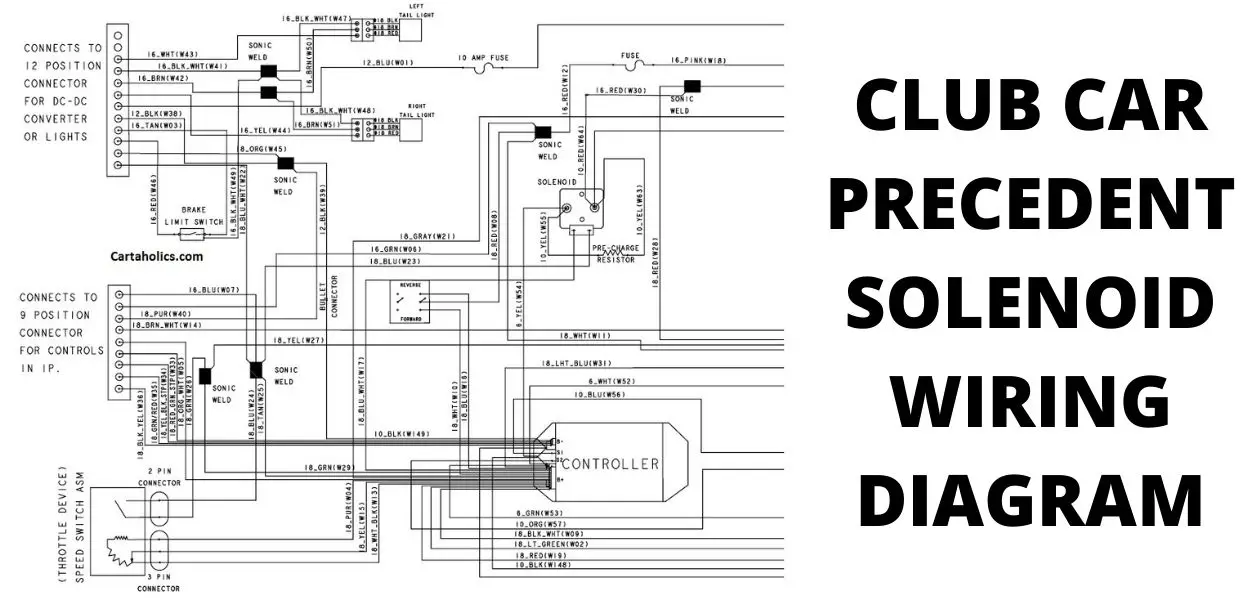
Club Car Onward Solenoid Wiring Diagram
This diagram shows the solenoid and related connectors and circuit components used in Club Car Onward Golf Cart.
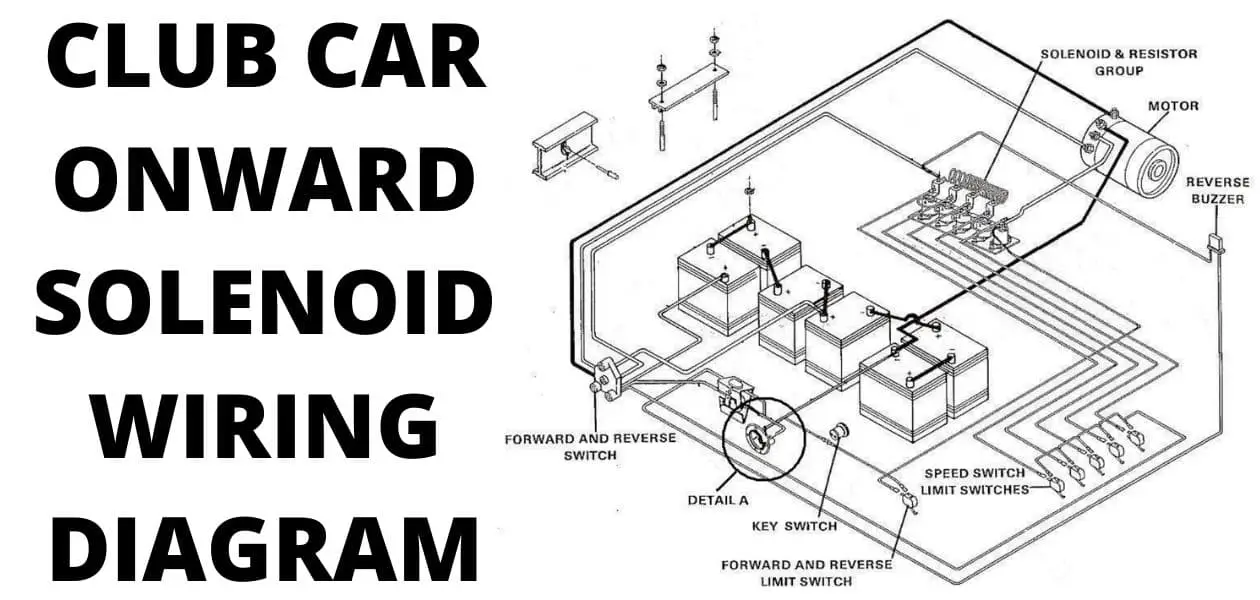
Ez Go Gas Golf Cart Solenoid Wiring Diagram
The following diagram shows the Ez Go Gas Golf Cart Solenoid Wiring Diagram for all the models:
EZGO TXT Solenoid Wiring Diagram
This is the EZGO TXT Solenoid Wiring Diagram:
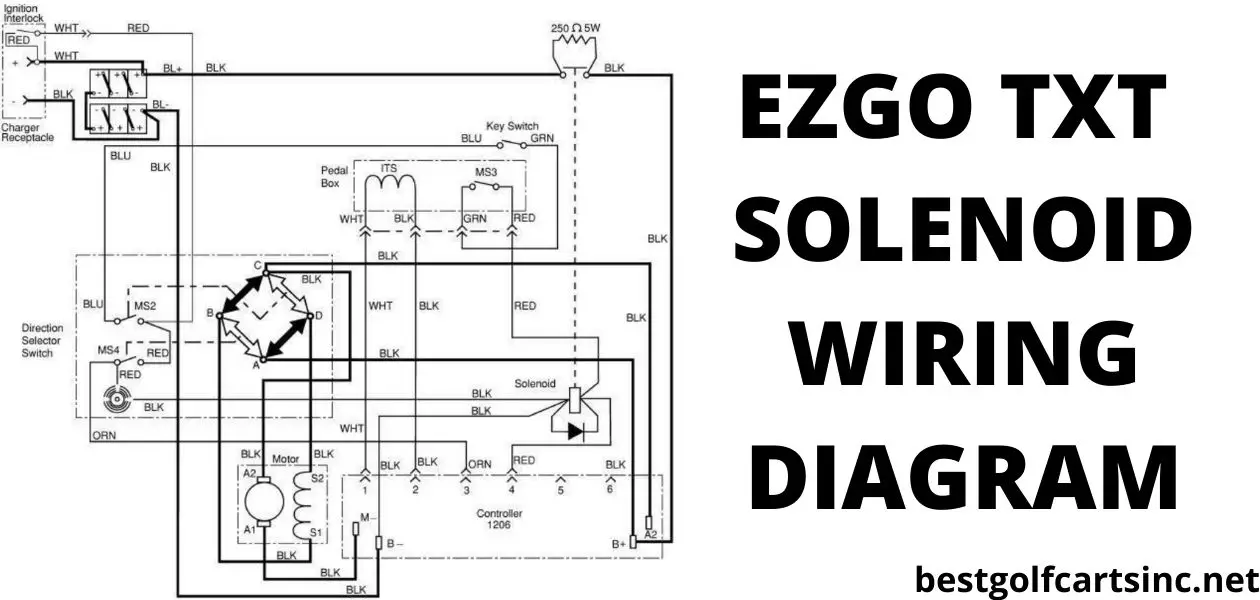
EZGO RXV Solenoid Wiring Diagram
This is the 2010 EZGO RXV solenoid wiring diagram:
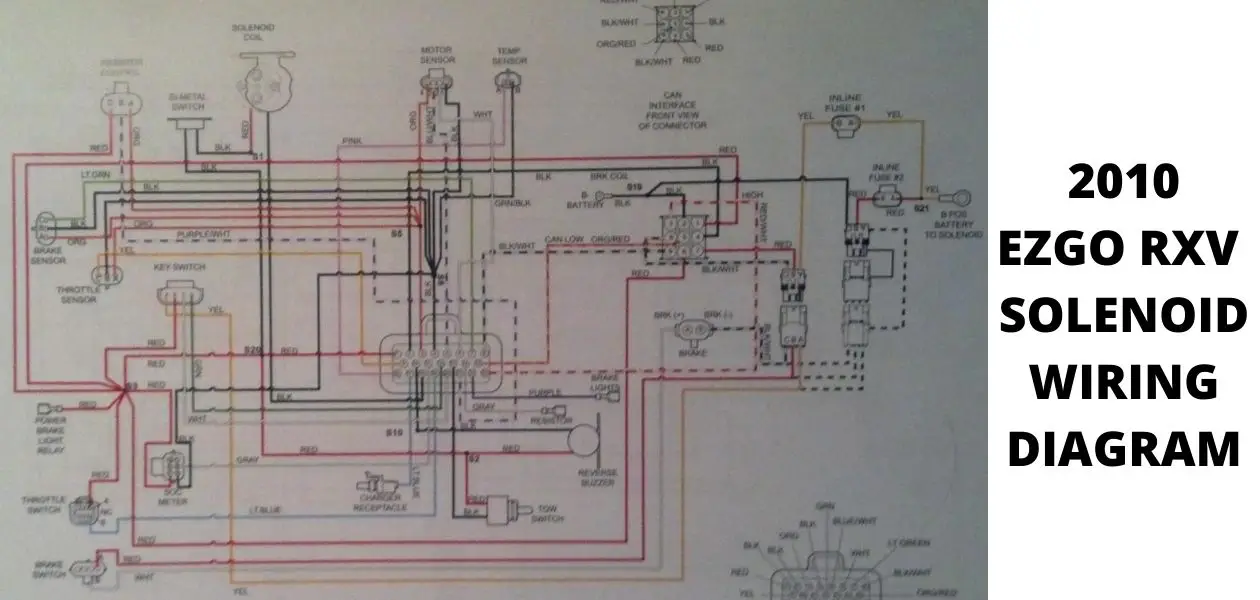
Yamaha Golf Cart Solenoid Wiring Diagram
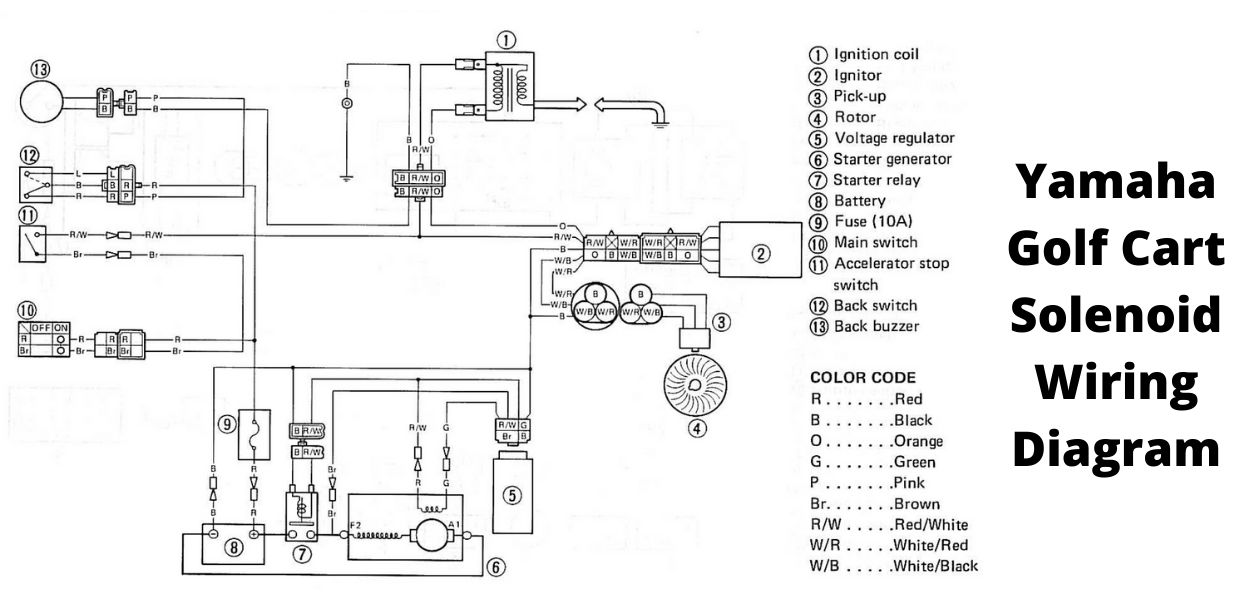
36 Volt Golf Cart Solenoid Wiring Diagram
This is the 36 Volt Golf Cart Solenoid Wiring Diagram:
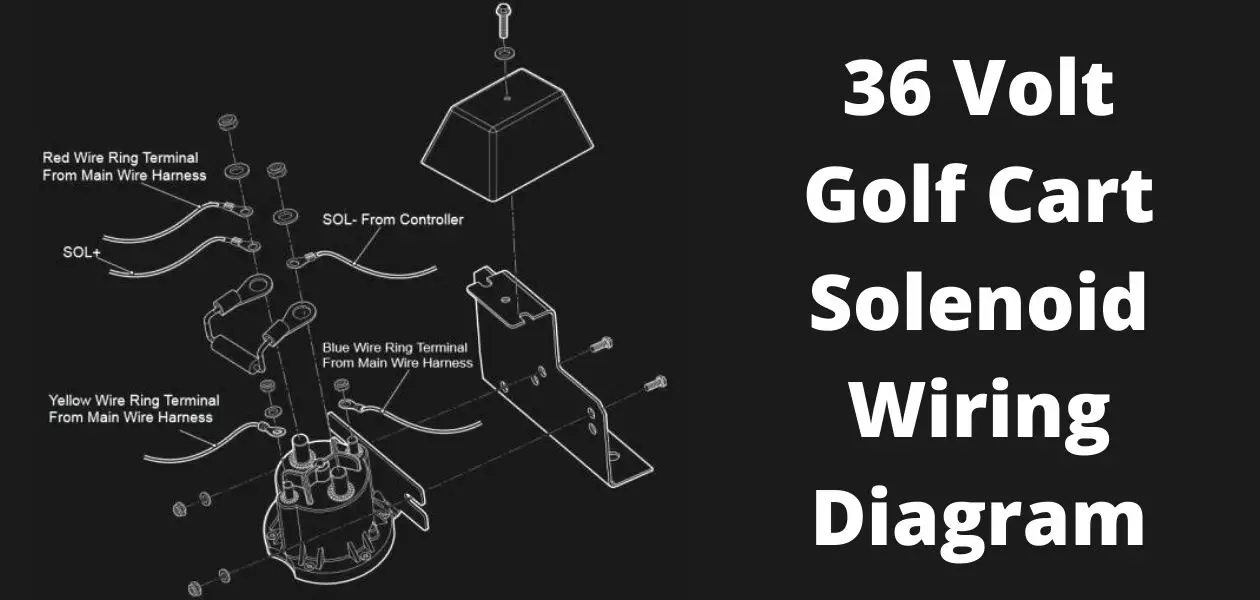
48 Volt Golf Cart Solenoid Wiring Diagram
The below figures explains the 48 Volt Golf Cart Solenoid Wiring Diagram:

Where Is the Solenoid Located on a Golf Cart?
The solenoid is located under the hood of the golf cart. It is usually mounted near the battery. The solenoid is a mechanical device that is controlled by the ignition system. The solenoid is responsible for controlling the valves that allow gas to flow into the combustion chamber. The solenoid is a valve that opens and closes to allow gas to flow into the engine. The solenoid is made up of two large terminals and two small terminals. The large terminals are connected to the battery and the small terminals are connected to the ignition circuit.
How Does a Solenoid Work in A Golf Cart?
A golf cart solenoid is a very important component of the gas powered golf cart engine. The solenoid is responsible for controlling the flow of fuel to the engine and, ultimately, to the combustion chamber. It also controls the movement of the throttle valve. A solenoid consists of two coils: a power coil and a pilot coil. The power coil is energized by the vehicle battery or alternator, causing the current to flow through the coils. When the current reaches a certain point, the magnetic field surrounding the power coil collapses, creating a “break” in the magnetic field that surrounds the pilot coil. The result is an electric current in the pilot coil that creates a magnetic field that pulls the plunger back into the solenoid. This action opens the throttle valve, allowing more fuel to flow to the engine.
Is there a Positive and Negative on A Golf Cart Solenoid?
If you would like to know whether there is a positive and negative on a golf cart solenoid, we will first need to talk about what a solenoid is.
A solenoid is a coil that moves when it gets a current. It is used to turn something on or off, depending on how the voltage is applied to it. An inductor is a coil with a winding.
The winding has a number of coils, and each coil is connected together. When a current flows through the coils, a magnetic field is created.
When the magnetic field is created, the coil turns. The coil turns on or off, depending on how much current goes through it.
How Do You Hook up A Solenoid on A Golf Cart?
When you are installing a solenoid on a golf cart, you should connect the positive terminal of the battery to the positive terminal of the solenoid. Then you should connect the negative terminal of the battery to the negative terminal of the solenoid. Then you should connect the two terminals of the solenoid to the two terminals of the activation circuit. You should make sure that the two terminals of the activation circuit are connected to the two terminals of the solenoid. You can also use a push button to turn the solenoid on and off.
Can a Golf Cart Run without a Solenoid?
A golf cart runs on a motor, which is controlled by a solenoid. A solenoid is a coil of wire that is wrapped around a metal rod. It is used to control the flow of current, so a golf cart cannot run without a solenoid.
How Many Wires Are Connected to A Solenoid?
The solenoid in a golf cart has three wires: power, ground, and signal.
The power wire goes from the battery to the solenoid. The ground wire connects the solenoid to the frame of the cart. The signal wire goes from the solenoid to the radio.
When the radio is turned on, it will send a signal to the solenoid, which in turn turns the steering wheel and the brake pedal.
How Do I Tell If My Solenoid Has Been Damaged?
Check the solenoid’s wiring connections for broken or loose wires. Also, check for corrosion. If you are able to turn the solenoid on and off, it is likely not damaged. If the solenoid does not turn on or off, it may be damaged.
What Does the Diode Do on A Golf Cart Solenoid?
A diode is used on a golf cart solenoid to allow power to flow in one direction while preventing power from flowing in the opposite direction. This is important because it allows the golf cart to move forward or backward, but not to turn.
How Do You Test an Electric Golf Cart Solenoid?
Testing an electric golf cart solenoid involves checking the resistance of the solenoid against a known value. Once the resistance is known, the solenoid can be diagnosed as faulty and replaced.
Conclusion
I hope that you now know the exact golf cart solenoid wiring diagram. I have tried to explain each and every detail about how the solenoid works, how to hook it to a golf cart and how to test it.
If you have any issues with Club Car, EZ Go, and Yamaha Golf Cart with respect to its solenoid, the above Solenoid Wiring Diagram should help you solve them.
